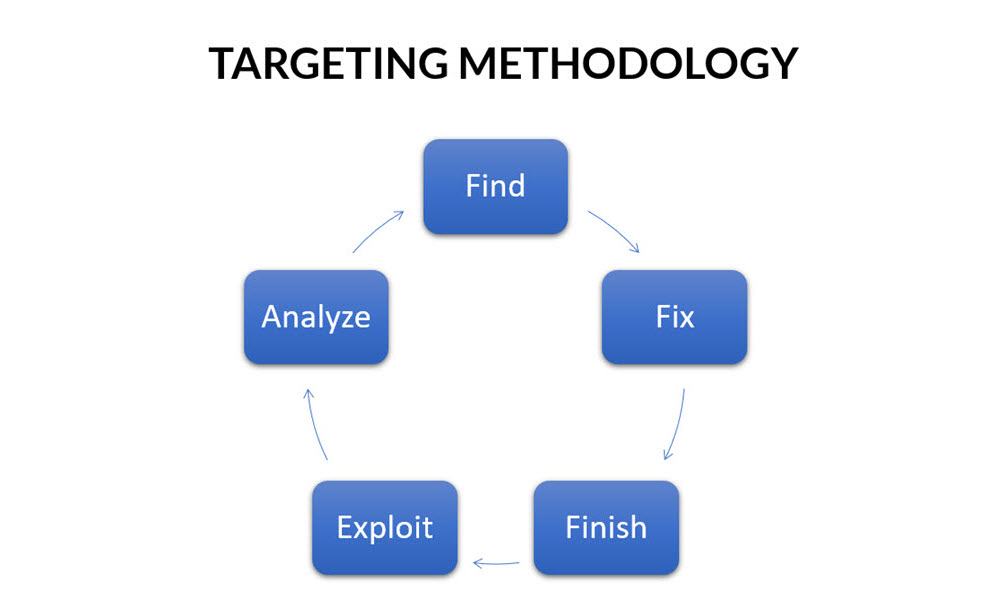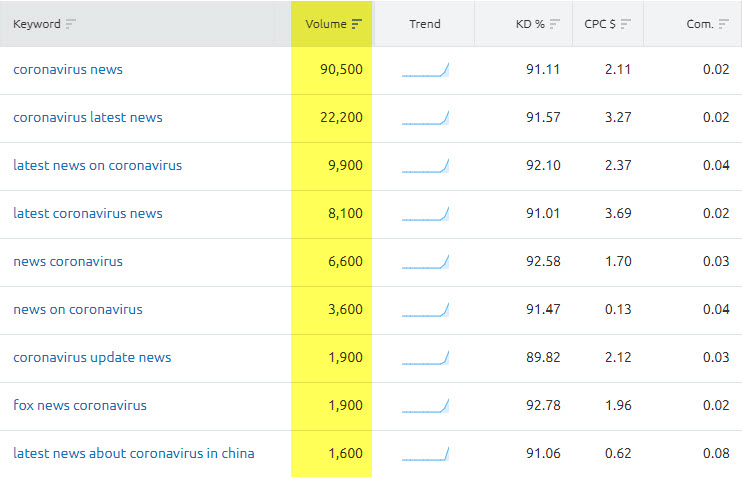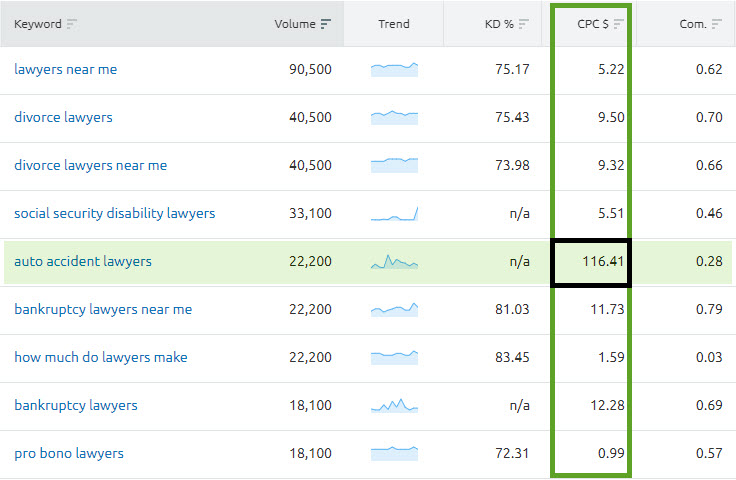EVERYTHING in your search engine optimization (SEO) performance begins with keyword research. If the quality of your keyword research is poor, then no matter what other domain-building activities you execute well, your traffic volumes and growth will be limited by the quality of the keywords you choose to target.
Think of keyword research and targeting like laying the foundation and framework for a house. If you pour a small or weak foundation, you can’t build a big or grand house on top. If you do, you’ll just spend a lot of money on something that will cost you a lot of money to maintain and you certainly won’t get the return in your investment the way you may have hoped.
That’s why it’s absolutely imperative that you invest a considerable amount of time on keyword research. But first, it’s important to understand what keywords are and what they actually represent.
What are long tail keywords?
Keywords — specifically, long tail keywords — are the exact query string that a user types in a search engine query bar. In more common vernacular, it’s what someone “googles“.
So for example, if I typed in a search engine the words “what is coronavirus” like in the image below, the entire phrase I entered would be the long tail keyword query string.

There are probably a ton of other people out there besides me who also may have queried this exact phrase. That intuitively makes sense, right?
But if I asked you how many people in the world searched this query this month or last month…or even 12 months ago…your answer is probably going to be a wild guess. You’d probably also guess a different number for each time period.
That’s because you intuitively understand that 12 months ago, there probably wasn’t as much interest in googling “what is coronavirus”. But more recently, the topic suddenly became relevant to global audience.
Taking it a step further, the specific keyword “what is coronavirus” is probably not being googled as much right now as it was a few months ago.
There are SEO keyword research tools that exist that can actually give you various quantitative metrics for any given long tail keyword.
Best Keyword Research Tool
It’s impossible to conduct keyword research for SEO without a strong keyword research tool. If you think you’re doing SEO and you don’t use an SEO tool, then you’re frankly not doing SEO.
I use many SEO tools in my day-to-day SEO activities, but one of them in particular is a clear winner as my go-to tool for keyword research and targeting.
SEMRush
I probably use Ahrefs just as much in my day-to-day SEO activities; however, for keyword research, hands-down, I choose SEMRush.
SEMRush (semrush.com) has an excellent interface for keyword research and targeting. The interface displays a lot of visual data in a single view, which makes keyword research and analysis much faster and efficient. And if you’ve attended any of my webinars, you know that speed is one of the big 3 factors when it comes to SEO.
Of course, SEMRush provides far more capabilities than just keyword research, but I’m only going to focus on that aspect in this article.
Now that we have a keyword research tool, let’s talk about how to assess keyword quality.
Keyword Quality
A common mistake many people make when conducting keyword research is that they focus solely on a single quantitative factor like total search volume for a specific keyword. While volume is an important factor, there are a number of other quantitative AND qualitative factors to assess and analyze during your keyword research.
Quantitative Value Metrics
Quantitative metrics can be measured numerically and are relatively straightforward. Quantitative metrics to gauge keyword quality include factors like:
- Keyword search volume
- Keyword trends
- Cost per click (CPC)
Let’s break down each one of these metrics.
Keyword Search Volume
Keyword search volume is the total volume of people querying a particular keyword every month, averaged out over a one-year period.
For example, the following image is a screen snippet from SEMRush’s keyword research tool. The highlighted column displays the keyword search volume for a given keyword.
Keyword search volume is the quantitative metric most beginner SEOs hone in on during the keyword research process. But focusing solely on volume is a huge mistake.
Because as you can see, while there is quite a bit of search volume for the keywords in the above list, there are more factors that matter than just volume or quantity of search traffic.
Keyword Trends
Just to the right of the highlighted column is a column labeled, “Trend”. This trend line shows the pattern of search volume for the corresponding keyword over the past 12 months.
Using the keyword “coronavirus news” as an example, you can see that while the keyword search volume is about 90,500, the majority of that search happened in the last 3-4 months.
Since keyword search volume is a monthly volume averaged out over a 12-month period, this means that current month search volumes for this keyword are far higher than 90,500 queries per month.
The keyword trend line also tells me a lot about the future of this keyword. At some point, the search volume will decline back to its pre-surge state.
Cost Per Click
You may be wondering why cost per click (CPC) matters when we’re talking about keyword research for SEO.
Since we’re targeting keywords to rank for organically, the CPC doesn’t impact you directly. On the other hand, depending upon the purpose of your site, the CPC value of a keyword may be an opportunity to bring you revenues.
For example, take a look at the keyword list below:
When conducting keyword research for lawyers, the keyword, “auto accident lawyers” shows a CPC value of $116.41.
So, what does that mean?
That means that law firms are paying for AdWord listings (indicated by the “Ad” boxed icon next to the search result listing) whenever the query, “auto accident lawyers“, is searched on a search engine. If a user then clicked on one of the AdWord listings, the average charge to the law firm with this AdWord campaign would be $116.41.
On the other hand, if you ranked on page 1 organically for this keyword, you would be paying nothing for that exposure AND you would be getting far more clicks and conversions.
In fact, all of the most popular niche search engines you use today (i.e. zillow.com, yelp.com, avvo.com, etc.) were created by expert SEOs.
As you can see, keyword research requires quite a bit of analysis. But quantitative assessment of keywords is just the beginning. Now we move on to qualitative value metrics.
Qualitative Value Metrics
Qualitative metrics require your unique application, market knowledge and experience and, therefore, are more abstract and contextual. Such considerations include (but are not limited to):
- Conversion intent
- “Locality”
- Predicted trend
Qualitative value metrics don’t have any standard numerical values, which makes it difficult for inexperienced targeters to assess. Determining a keyword’s qualitative value depends upon one’s ability to apply experience and wisdom into their analysis.
Conversion Intent
It’s important to remember that there is a human being on the other side of a keyword query. We search for and discover information primarily through search engines. And what we query says a lot about who we are and our intent at a given moment in time.
For example, take a look at the sample keyword list below:

(Keywords indicate a user’s intent and are a critical component of keyword research analysis.)
Let’s look at the keyword, “red shoes“. The keyword search volume is high at 49,500 monthly search volumes with a consistent / flat 12-month trend. Looks like a great keyword to target, right?
Not exactly – especially not if you own a e-commerce store that only sells women’s shoes.
It’s not clear whether a man or woman is querying “red shoes”. It’s also not specific about type of shoe.
There are big differences between women’s flats versus women’s high heels. And even within high heels, there are styles such as pumps or stilettos. Is the user looking for a particular material such as leather or canvas?
So while average monthly search volumes may be lower for certain keywords, a user’s intent is nestled within the keyword query. The better the keyword intent matches your product or service offering, the higher likelihood the person may convert.
Locality
Somewhat similar to Conversion Intent, some keywords indicate that a user may be searching for a local service.
At times, the keyword may actually contain the geography of interest, such as the keyword, “best lawyers in houston” and it’s clear in the query that someone is searching for a lawyer whose jurisdiction includes Houston, Texas.
On the other hand, if you queried a keyword such as, “what to do on a friday night“, there’s a high likelihood that you are searching for something to do near your current location.
Predicted Trend
When we look at keyword search volume trends from a forensic or historical perspective, this helps us in our quantitative analysis on capturing potential future or forecasted opportunities.
But sometimes, some keywords may look like they have a flat trend but you may have market experience and insight to know that a certain product will no longer be available in a year.
An SEO without that knowledge may still assess a keyword as a good opportunity to capture, whereas you may not because you have industry or operational intelligence on future supply.
Other Resources
Keyword research and targeting is an incredibly crucial starting point for SEO. The strength of your site’s traffic is limited by the strength of your on-page SEO, which begins with the keywords you select.
If you need more help, you can schedule a free one-on-one consult for your specific project on our calendar.
Alternatively, you can attend one of our live webinars on this specific on-page SEO topic.
Free Online SEO Courses:
- SEO Basics (Part 1): What is SEO & What are Keywords?
- SEO Basics (Part 2) What’s involved in keyword ranking?
- SEO Basics (Part 3): Indispensable SEO Tools and how to use them



